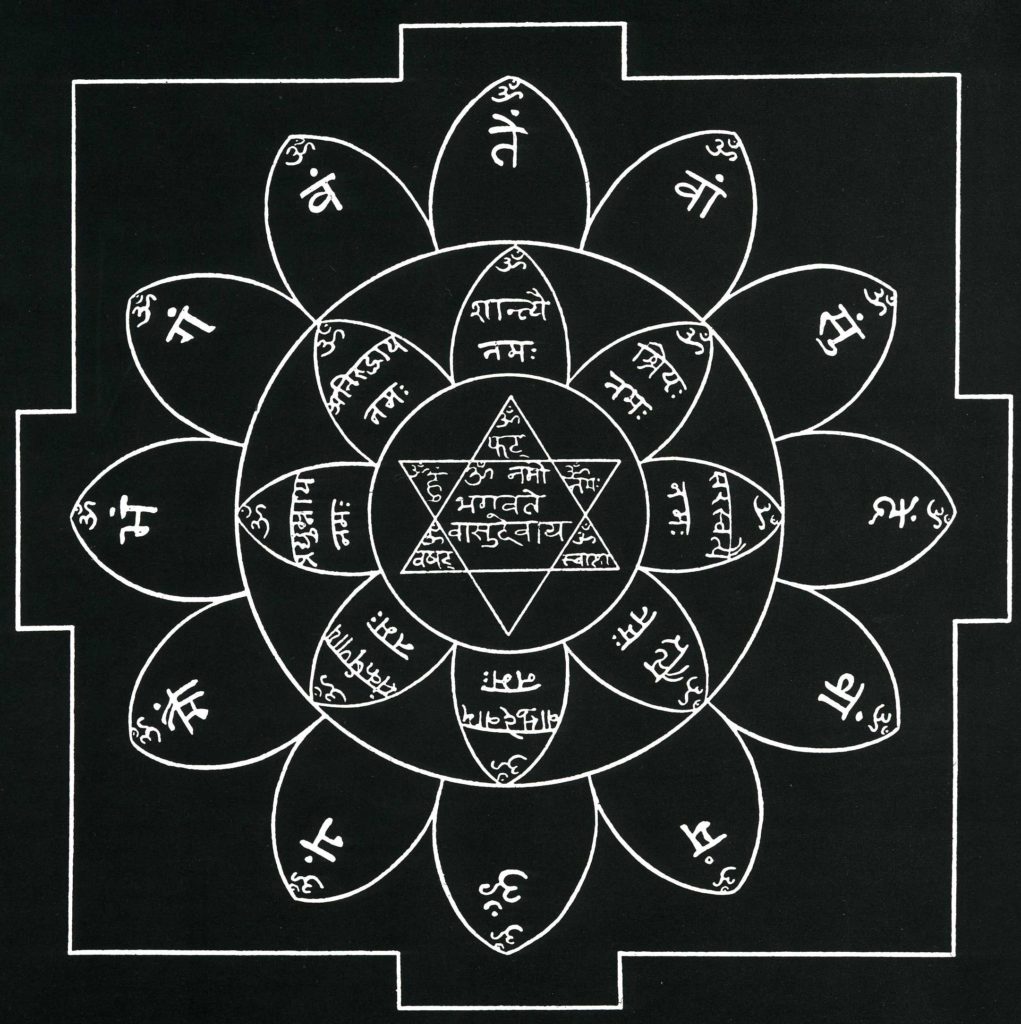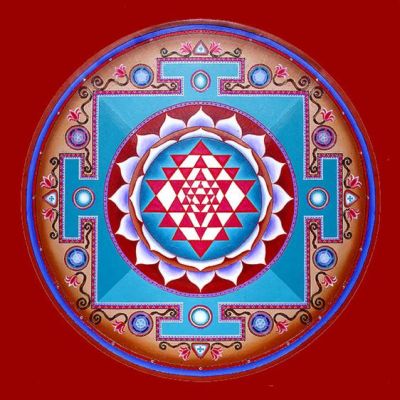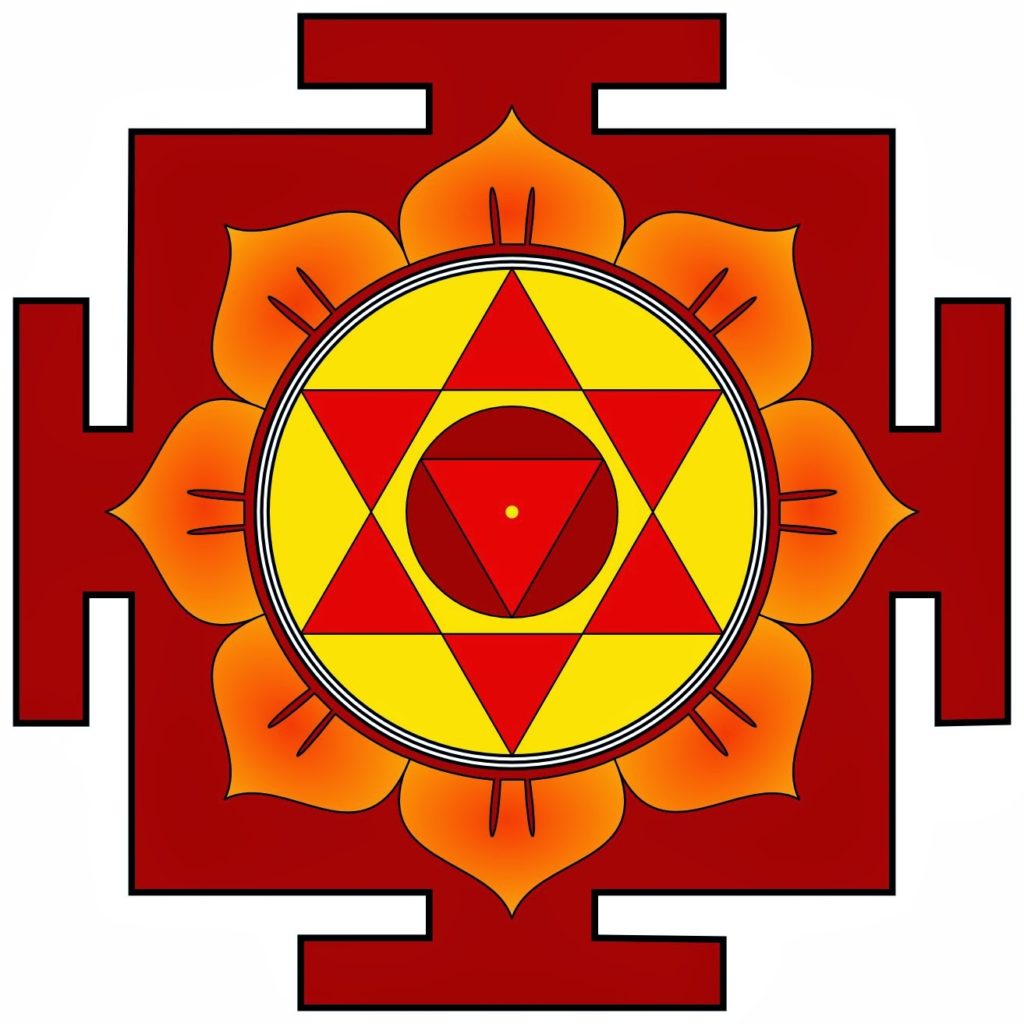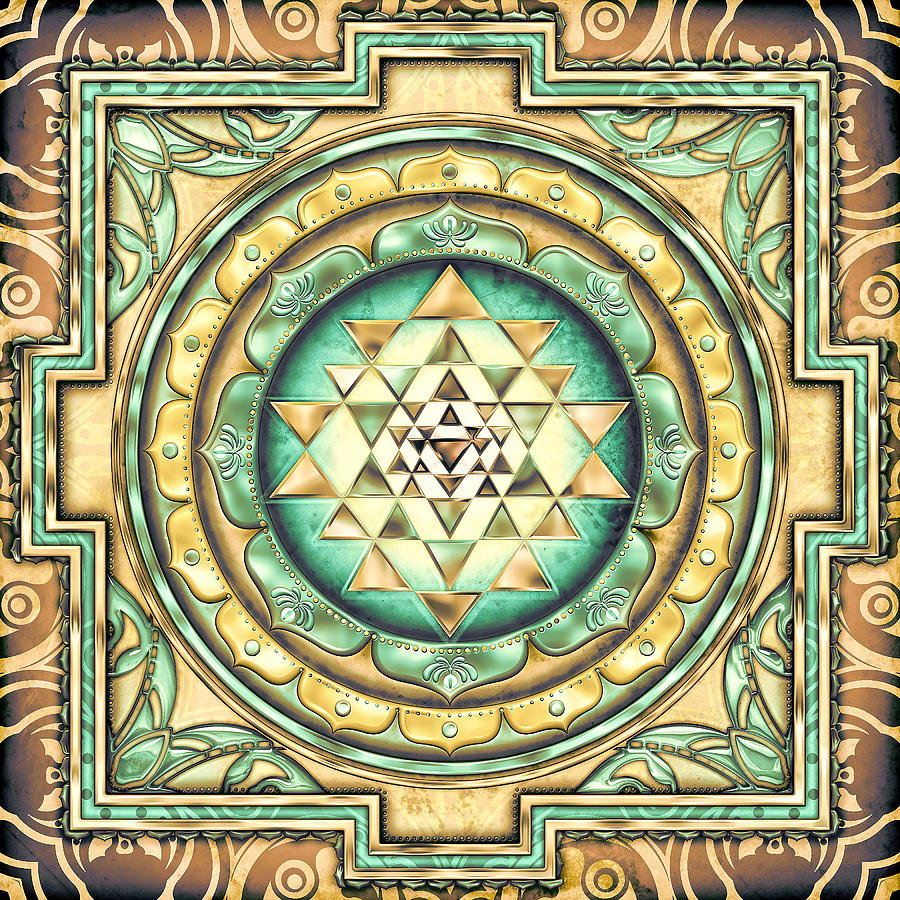1.- Yantra: What is it?
Yantra means “support” and “instrument“. A Yantra is a geometric design that acts as a doorway for contemplation, concentration, and meditation. They have a spiritual meaning as they are usually associated with some Hindu deity. They also have symbolic and specific meaning, referring to higher levels of consciousness.

2.- Yantras: How do they work?
At the base is something called the “energy of form.” Their idea is that through their geometric shapes they emit a specific energy and frequency pattern.
When one focuses their attention on a Yantra, their mind goes into Resonance with the energy of that Yantra. He acts as a “tuning” mechanism or gate to other levels of consciousness.

3.- Yantras: how they are interpreted
The power of the Yantras to induce Resonance is based on their specific form. It consists of one or more geometric shapes, which are combined in accurate model. They represent (and transfigure) on the level of the physical universe the corresponding deity. From this point of view, we can argue that the Yantra works in a similar way to a Mantra.
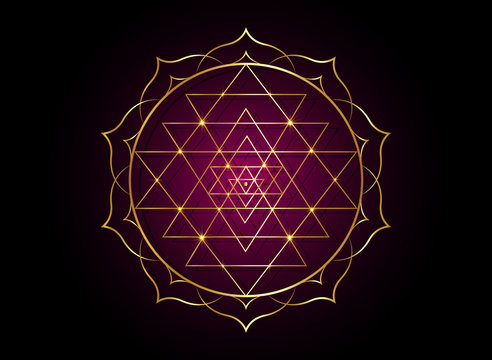
3.1.- The outline of the Yantra
Each Yantra is bounded from the outside by a line or group of lines that form its perimeter. These marginal lines have the function of maintaining, containing and preventing the loss of the magical forces represented by the structure of the Yantra, generally concentrated in the central point. They also have the function of increasing your energy and subtle.

3.2.- The point (Bindu)
The point (Bindu) signifies focused energy and its concentration. It can be understood as a deposit of energy that, in turn, can radiate it. The point is usually surrounded by different surfaces, be it a triangle, a hexagon, a circle, etc. These forms depend on the characteristic of the deity or aspect represented by the Yantra. In tantric iconography, the point is called Bindu, symbolically considered as Shiva, the source of all creation.
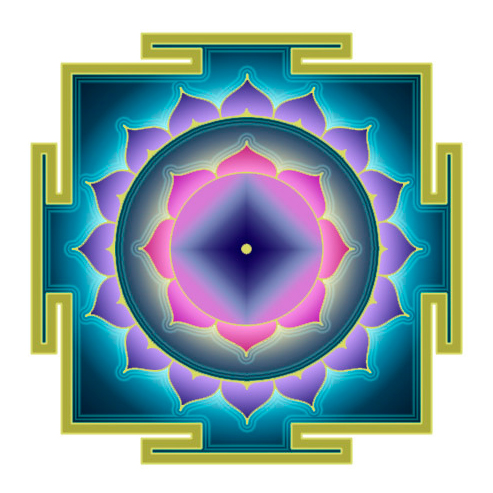
3.3.- The triangle (Trikona)
It is the symbol of Shakti, the feminine energy or aspect of Creation. If it points down it represents the Yoni, the female sexual organ and the symbol of the supreme source of the Universe. And when the triangle points upwards, it means an intense spiritual aspiration, the sublimation to more subtle planes from the element of Fire (Agni Tattva).

3.4.- The six-pointed star (Shatkona)
A typical combination often found in the graphic structure of a Yantra is the superposition of two triangles, one pointing up and the other pointing down, forming a six-pointed star (Shatkona), also known as the Star of David. This form symbolically represents the union of Purusha and Prakriti or Shiva–Shakti.

3.5.- The circle (Chakra)
Another simple geometric shape that is often used in Yantras is the circle, which represents rotation, a movement closely linked to the spiral shape that is fundamental in the macrocosm. At the same time, the circle represents perfection and emptiness (happiness). In the series of the five fundamental elements it represents the air (Vayu Tattva).

3.6.- The Square (Bhupura)
Among the simple geometric elements that make up Yantras is also the square (Bhupura). The square is usually the outer limit of the Yantra and symbolically, it represents the earth element (Pritivi Tattva).

4.- Yantras: how they are used
As we showed earlier, the secret key to using Yantras in meditation is resonance. In order to help you in meditation through the Yantras you can use this incense from our online store.

The resonance process is established by mental focus on the image of the Yantra. As long as the mind is attuned to the specific mood associated with that Yantra, the energy flows, but when the resonance stops, the energy disappears.
Discover for yourself the unknowns of the Yantras by visualizing them: the powerful Maha Vidya Kali, Tripura Bhairavi, Chinnamasta, Dhumavati, Kamalatmika, and the deities Shiva, Atman y Ganesha.
